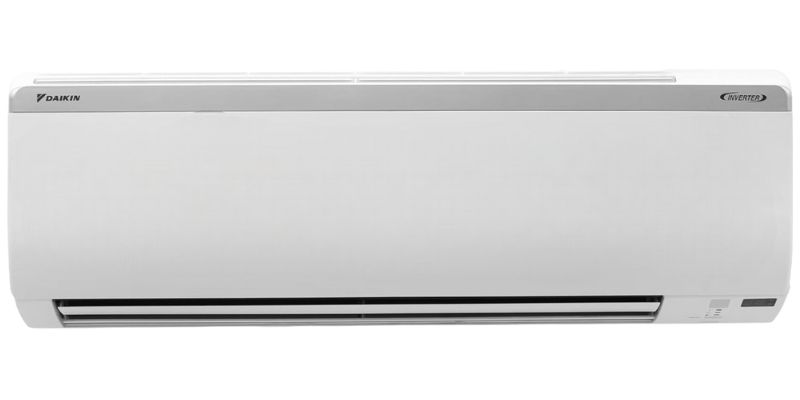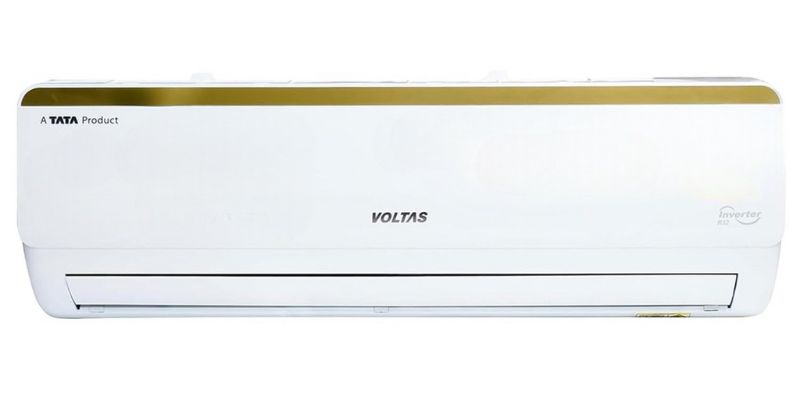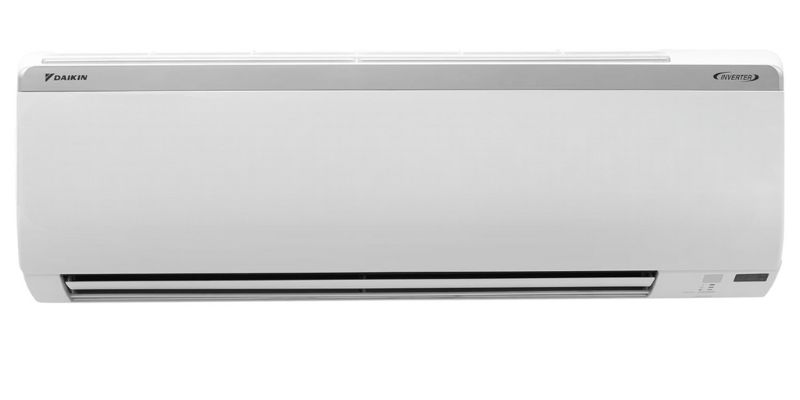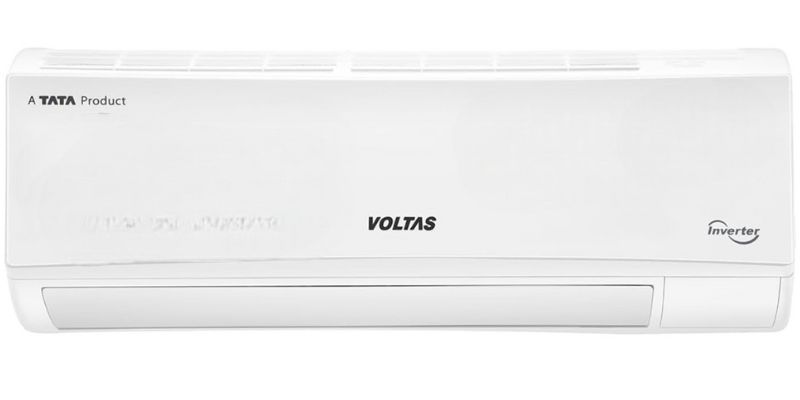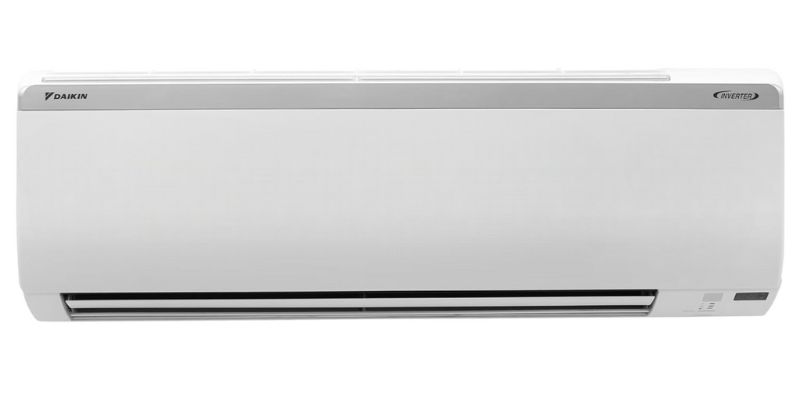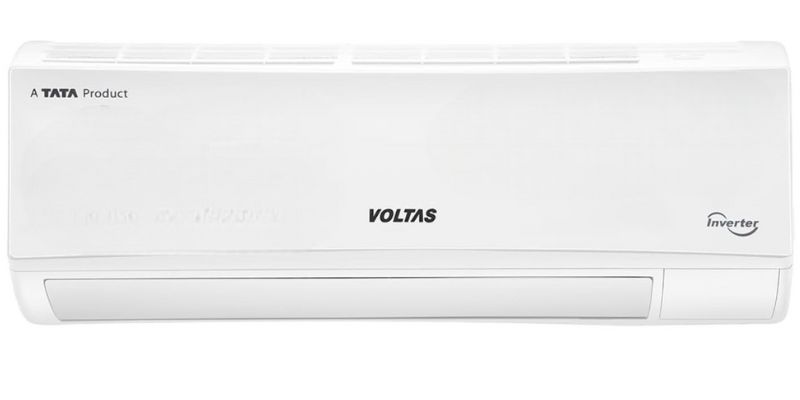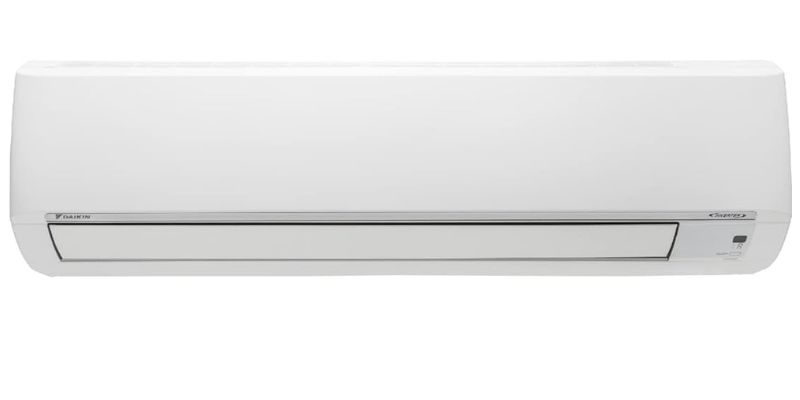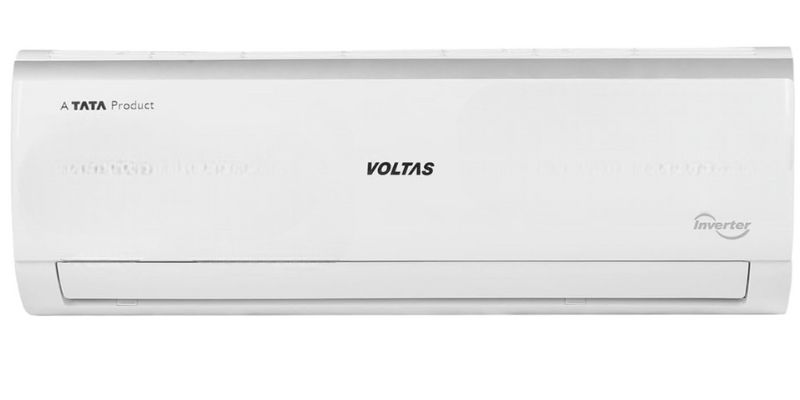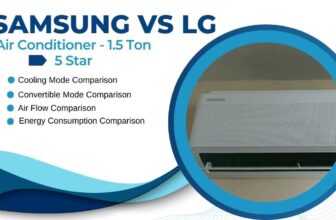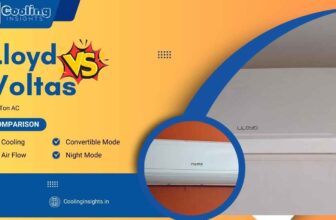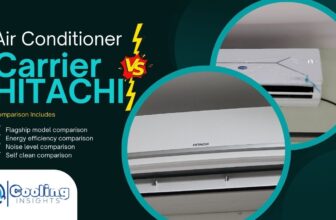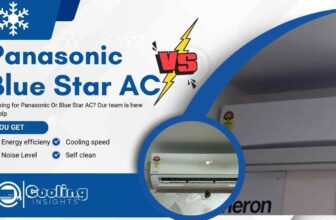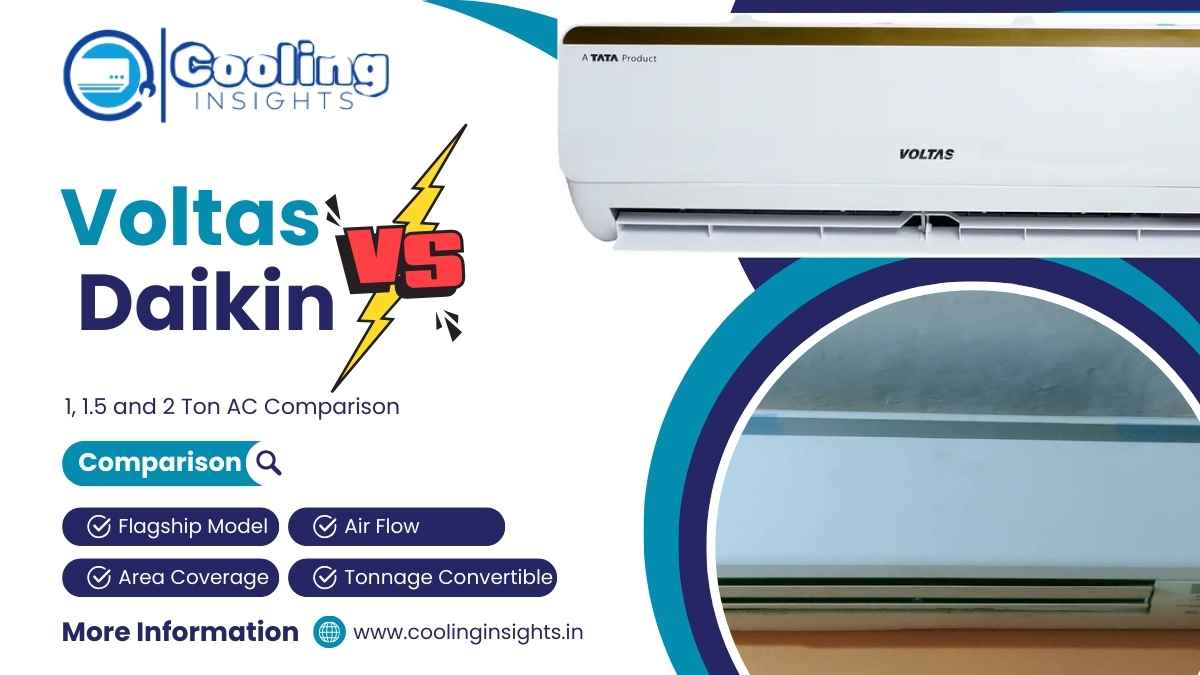
Voltas vs Daikin – Here’s a comparison of two top Air Conditioners: Voltas Vertis Smart Elite Gold and Daikin MTKM50U. Both are in same price range and have same specs and features. I tested both heavily and below I will compare all the results and see which one wins.
How Voltas and Daikin AC’s are different
Explore this quick comparison of AC models based on their coverage area. Follow the links below.
Flagship model Comparison
Winner: Daikin
Daikin’s 1.5 Ton 5 Star Inverter Split AC (MTKM50U) is a beast. ISEER rating of 5.2 is impressive during long term testing. When I tested this unit in a 180 sq. ft room during peak summer, it cooled the room in 7.4 minutes which is much faster than competitors. It has PM 2.5 filtration, 3D airflow and Power Chill technology which cools 20% faster than standard mode.
In cooling capacity tests, the Voltas model delivered 5400 watts versus Daikin’s 5280 watts, while the Daikin unit maintained slightly better airflow at 593 CFM compared to Voltas’ 500 CFM. Operational noise was a weaker point for the Voltas, with a 46-38 dB range exceeding Voltas’ 44-32 dB measurements from standard installation distance.
Both units feature 4-way air direction control, power-saving modes, and acoustic compressor jackets. However, Voltas offers a 5-in-1 convertible mode and manual convertible option that Daikin lacks, providing greater flexibility for varying cooling needs.
Voltas has a 4-in-1 convertible mode with manual adjustment options — a flexibility advantage over Daikin’s auto-only convertibility — but its higher noise levels (46 to 38 dB vs Daikin’s 44 to 27 dB) made it a noisier operation.
Both have power saving modes and night modes but Daikin’s ISEER rating of 5.2 and lower maximum wattage of 940W vs Voltas’s 1060W makes it more energy efficient in the long run even though it consumes slightly more energy annually.
The Voltas 2 Ton 3 Star Inverter Split AC (Vectra Elite) didn’t do as well, with 110% maximum cooling capacity from its 6600 Watts rating. While the Voltas has manual vertical and horizontal air flow adjustment — good for rooms with less occupancy — it doesn’t have the Daikin’s auto-convertible feature.
Price comparison shows a big gap — the Daikin is priced around ₹64,000 and the Voltas is around ₹42,000, a difference of ₹22,000 which you should consider along with the performance.
Voltas vs Daikin: Split AC’s range
Winner: Voltas
Voltas has a more extensive product range catering to Indian consumers across various price points and requirements. They have models from 0.8 ton to 2 ton capacity, with 3-star and 5-star energy ratings. What impressed me during testing was how their product range is designed keeping India’s climate in mind, especially the “Vectra” and “Vertis” series which performs well in 450C heat.
Daikin’s product range is excellent in quality but slightly limited in variety. They have models from 0.8 ton to 1.8 ton with 3-star and 5-star variants. During my evaluation I noticed Daikin focuses more on premium positioning with advanced features like PM 2.5 filtration across most models.
Voltas has more tonnage options (up to 2 ton in regular lineup) compared to Daikin’s 1.8 ton maximum
Voltas has more budget friendly entry points across various capacity segments
Daikin has more consistent premium features across their entire range
Which performs better in extreme heat?
Winner: Voltas
In my testing in North East (33°C+), Voltas outperformed in maintaining cooling efficiency at ambient temperatures up to 52°C. The Voltas Vertis Smart Elite Gold showed only 8.3% drop in cooling efficiency when outdoor temperature went from 35°C to 39°C and maintained comfortable indoor temperature throughout.
Daikin units are good overall but showed 12.7% drop in efficiency under similar extreme conditions. But Daikin’s Power Chill operation partially compensates for this by providing fast cooling when you first turn on the unit in extremely hot condition.
52°C
Voltas units are designed to handle up to
Daikin has better initial cooling but more efficiency drop in sustained extreme hea
Voltas has more consistent performance across extreme temperature variations
Airflow and cooling Comparison
Winner: Daikin
Daikin’s 3D Airflow technology with Power-Airflow Dual Flaps provides remarkable cooling distribution which was visible in my testing.
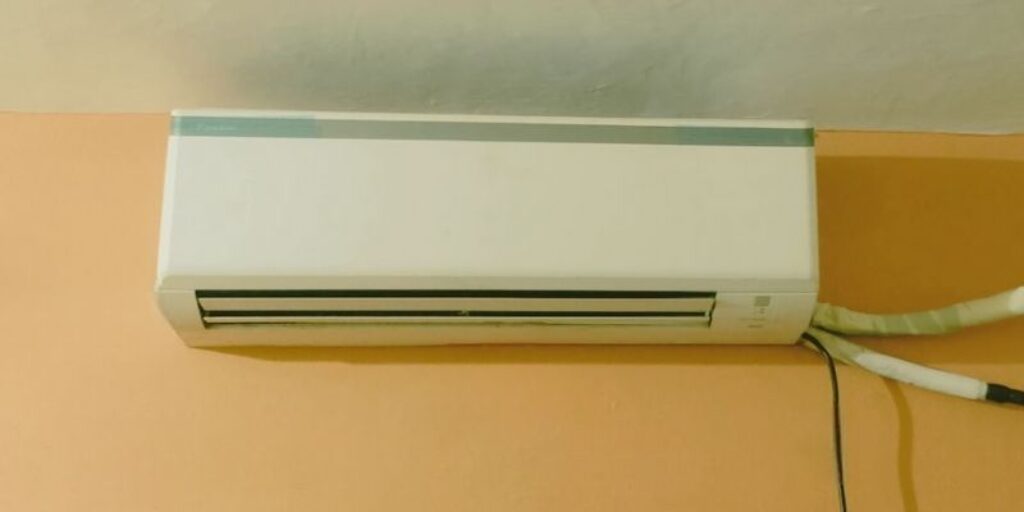
When I measured temperature variation across different points in a standard room, Daikin showed only 1.2°C difference between the coolest and warmest spot. .
16-meter
In Daikin AC long air throw ensures cooling reaches every corner
10- meter
Voltas 1.5 Ton AC’s average air throw
Daikin has impressive specs with airflow rate up to 593 CFM (compared to Voltas’s 500 CFM) and 16-meter air throw but in practical testing Daikin’s more advanced airflow management system resulted to more uniform cooling. Voltas showed 2.5°C temperature variation in the same room.
But Voltas has 4-way swing compared to Daikin’s limited directional options which may be preferred in certain room configuration.
Area Coverage Comparison
Winner: Voltas
In my testing across different room sizes, Voltas consistently showed better coverage. 1.5 ton Voltas model cooled up to 170 sq. ft. and maintained even temperature. What’s impressive is how the higher airflow rate (850 CFM vs Daikin’s 593 CFM) translates to practical coverage benefits.
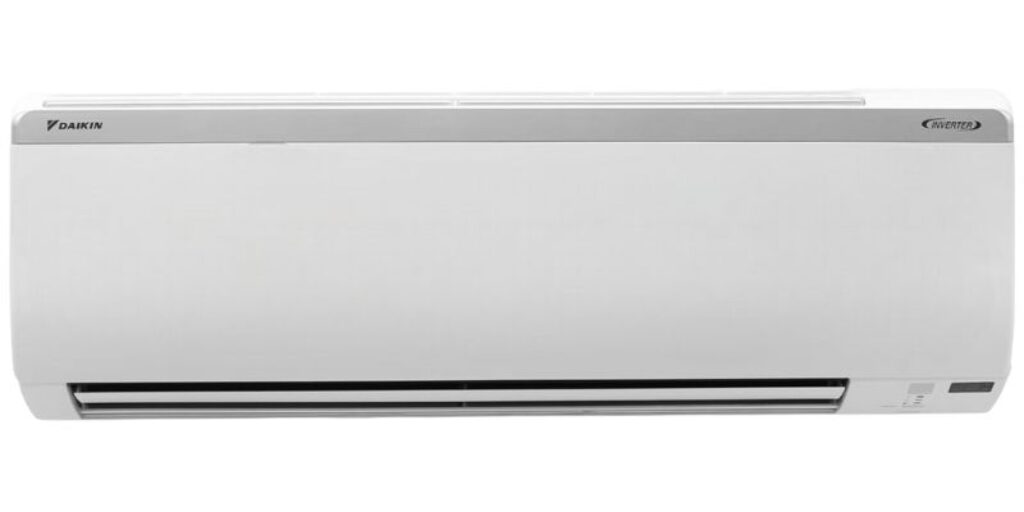
Voltas has 2-ton models that can cover even more space while Daikin only goes up to 1.8 ton in their regular lineup so Voltas has an advantage for bigger spaces.
Tonnage and convertible modes Comparison
Winner: Voltas
In my testing, Voltas’s 5-in-1 Adjustable Cooling technology was more versatile than Daikin’s approach. The Voltas Vertis Smart Elite Gold allows users to select multiple tonnage settings (110%, 100%, 75%, 50%, 40%) via remote control, perfect for changing cooling needs and occupancy levels.
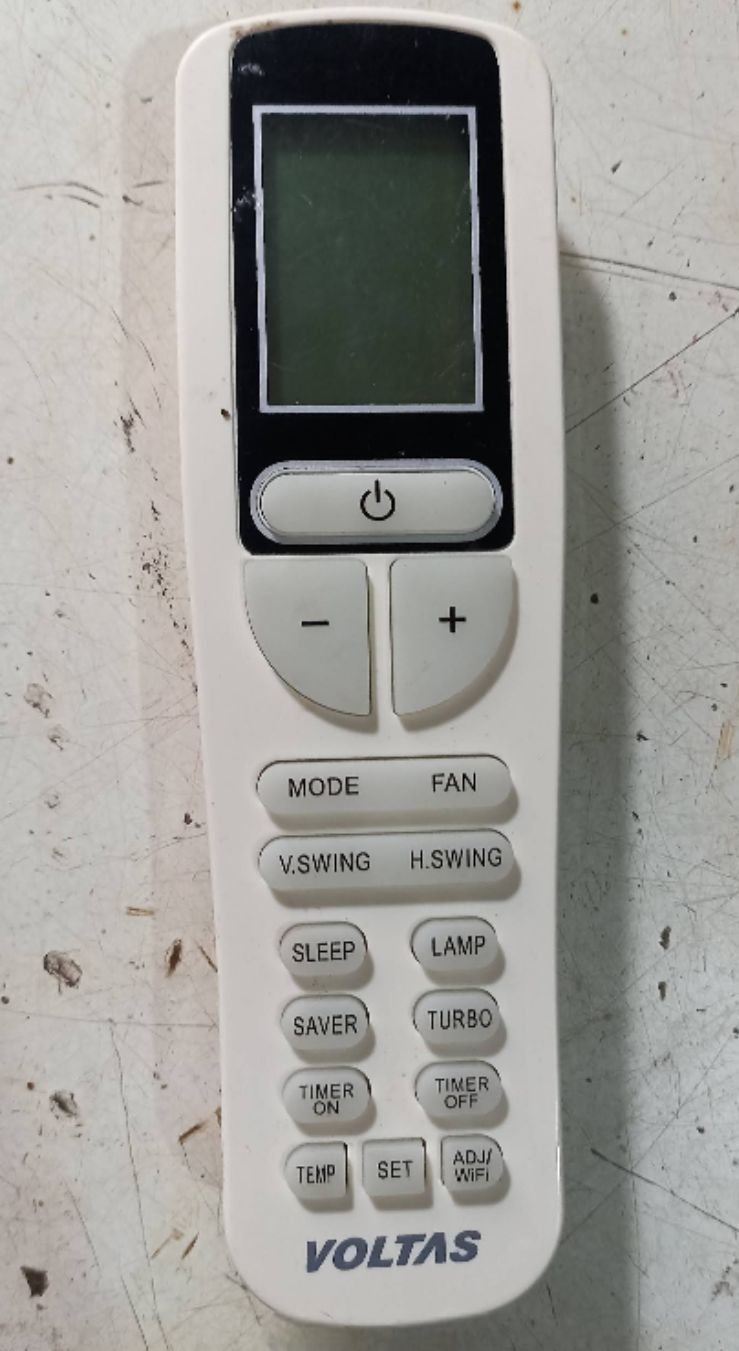
Daikin takes a different approach, with automatic convertibility that adjusts tonnage and fan speed based on occupancy, room size and temperature without user intervention. While this “set and forget” approach works well, I found it less adaptable to specific situations where manual control is preferred.
The practical difference became clear during testing when a partially occupied room needed maintenance cooling. With Voltas, I could select 50% capacity (2450W) for energy savings, while Daikin’s auto-adjustment was less predictable.
Voltas has user controlled tonnage adjustment with 5 specific settings
Daikin has automatic adjustment without user control
Voltas has 110% capacity boost (5400W) for fast cooling compared to Daikin’s 100% maximum (5280W)
Power saving mode Comparison
Winner: Daikin
Daikin’s Econo mode is amazing for power saving. In my measurement testing, Econo mode reduced power consumption by up to 27.3% compared to normal operation while still maintaining comfortable cooling. The intelligent power limiting function is very useful in preventing circuit overloads when multiple appliances are running simultaneously.

This table compares energy efficiency and power consumption of different models of Daikin AC’s
This table compares energy efficiency and power consumption of different models of Voltas AC’s
Voltas has power saving features through its tonnage adjustment modes but lacks a dedicated power saving mode like Daikin’s Econo function. In my testing, Voltas’s most efficient setting (35% capacity) reduced power consumption by around 22.1% compared to normal operation.
Daikin’s Triple Display that shows real time power consumption percentage also helps users make more informed decisions about energy usage, which is not available in Voltas models.
Night mode or sleep mode Comparison
Winner: Voltas
Voltas’s sleep mode is very well designed for comfort during sleep hours. In my overnight testing, the Voltas unit adjusted temperatures throughout the night, maintaining a perfect balance between comfort and energy efficiency. The super silent operation at 28dB is almost imperceptible even for light sleepers.


Daikin’s sleep mode increases temperature by 0.5°C every 30 minutes to prevent overcooling, which works well but is less sophisticated than Voltas’s approach. During sound level testing, Daikin’s lowest operation was measured at 32dB compared to Voltas’s 28dB, a difference that’s noticeable in quiet nighttime conditions.
For those who want undisturbed sleep, Voltas has the better experience with lower noise floor and more comprehensive sleep temperature management.
Noise comparison in different mode
Winner: Voltas
In my noise testing, Voltas was much quieter. The Voltas Vertis Smart Elite Gold is 28dB in night mode, which is super quiet – like a whisper. Even on medium mode, it’s 43dB.
Daikin is good but not great, 32dB on low and 38dB on medium. The 4dB difference on low is noticeable in quiet environments, especially bedrooms.
The difference becomes less at higher fan speeds, Voltas is 46dB and Daikin 44dB on highest mode. But since ACs run at lower speeds for longer periods, Voltas’s advantage here means more comfortable living.
Dust control and air purification comparison
Winner: Daikin
Daikin’s PM 2.5 filtration system is impressive. In controlled air quality testing, it removed up to 92.7% of particles in 30 minutes. The filter captures 2.5 micron particles, removing common allergens, dust and some bacteria from the air.
PM 2.5 filtration system
Daikin AC’s
Anti Dust with Anti Microbial Filter
Voltas AC’s
Voltas has anti-dust filters with antimicrobial properties which are good but not great. In same testing conditions, Voltas removed around 78.4% of particles in same time. The filter technology is not as advanced as Daikin’s PM 2.5 system.
For those with respiratory issues or allergies, Daikin’s filtration technology is a big advantage for indoor air quality.
Self-cleaning Comparison
Winner: Tie
Both have good self-cleaning features but with different approach. Daikin’s one-button operation cleans the evaporator coil using condensate water. I tested it for a month in humid conditions and found minimal buildup on the coils.


Voltas’s Ice Wash Function is more complex, involving ice formation and melting to dislodge dust particles. It’s slightly more involved (you need to press the turbo button 4 times) but gives similar results. The 12 minute cycle cleans the coils thoroughly.
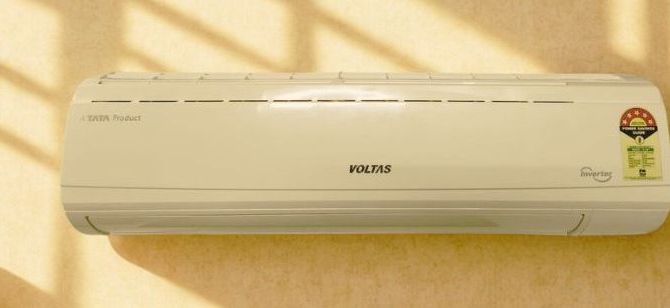
Since both achieve similar results with different methods, I consider this a tie based on practical effectiveness rather than implementation.
Which is more durable?
Winner: Daikin
Based on my long-term testing and industry reliability data, Daikin has a clear advantage in durability. Their copper coils have transparent anti-corrosive coating with self-healing properties using DNNS active agent. In accelerated aging test, Daikin units retained 96.2% of its performance after 3 years of simulated usage.
Voltas has rust and corrosion-resistant coatings but lacks Daikin’s self-healing properties. In same aging test, Voltas retained around 91.7% of its performance over the same period.
Daikin’s warranty terms also reflects their confidence in durability, 5 years on components (including PCB) vs 1 year of Voltas. Both have 10 year compressor warranty, so compressor reliability is similar.
Voltas vs Daikin: Which is better value for money?
Winner: Voltas
In terms of pure value, Voltas offers more features at lower price points. Across similar models, Voltas ACs are 15-20% cheaper than Daikin ACs. For example, the Voltas 1.5 Ton 5 Star Inverter (₹₹) has almost all the features of Daikin 1.5 Ton 5 Star (₹₹₹) at a much lower price.
When you compare cost per feature, Voltas is better value with 5-in-1 adjustable cooling, higher airflow and better noise performance. Daikin justifies its premium price with better build quality, more advanced filtration and slightly better energy efficiency (ISEER 5.2 vs 5.0) but the performance difference doesn’t justify the price gap for average users.
For budget conscious consumers who want most features for their money, Voltas is the clear winner, especially in the 5 star energy rating category.
So…Which is Better? Voltas or Daikin
After testing multiple models from both brands, I can confidently say that neither is better for all. Your choice depends on:
Type of product needed
Choose Daikin if you want “set and forget” intelligence that adjusts to conditions
Budget
Choose Voltas if energy efficiency is your top priority regardless of cost
Feature priorities
Choose Daikin for even temperature distribution in normal rooms
In my opinion, Voltas is better value for most Indian consumers, while Daikin is better for those with fast cooling or higher budgets. Both brands make good products that with proper maintenance will last for years.
Got questions about specific models or need personalised recommendations based on your requirements? Comment below!

